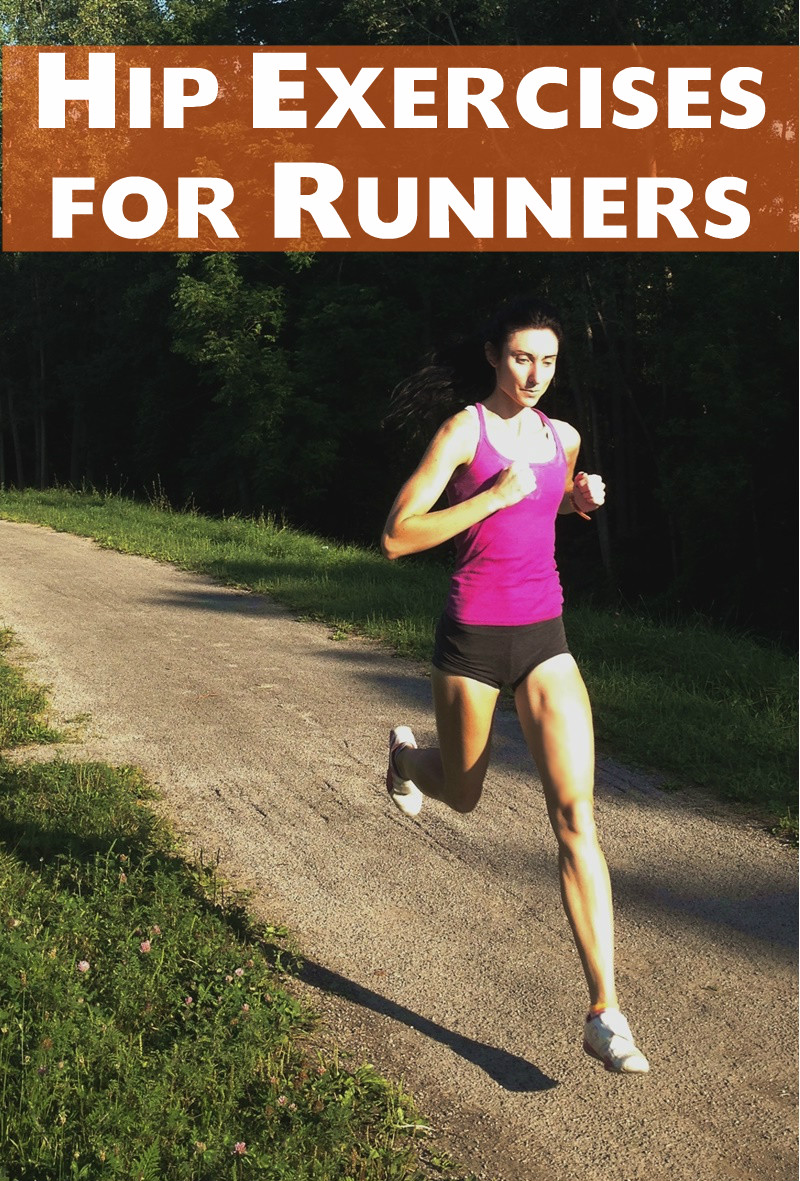The best hip exercises for runners should focus on strengthening the hip abductors and flexors because doing so helps you maintain a wide step width during running which reduces strain on the IT band, helping you prevent the dreaded ITBS.
Hip Exercises for Runners
The main reason for ITBS in runners is a crossover running gait, or a narrow step width. This means that at touchdown, the right foot for example, lands on the midline, when it should land under the right hip. Therefore, developing stronger hip abductors and flexors will widen your step width, keeping the feet away from the midline at touchdown.
More running-related problems caused by hip abductor and flexor weakness:
- gait side-to-side imbalances
- Iliotibial band friction syndrome
- increases hip abduction moments which influence foot pronation –excessive pronation causes Achilles injury, plantar fasciitis, and medial tibial stress syndrome (shin splints)
Below are excellent hip abductor and flexor exercises that will correct biomechanical imperfections during forefoot running.

(A) Lay on your side, knees bent, and together and life the top knee while keeping your feet together -like a clam. Be sure not to let your hips roll back, all the movement should be in the legs, do 3 sets of 15 daily and do them slow, and hold for a few second as well to really feel the burning
(B) Straight leg raises, do 3 sets of 15 daily.
(C) Lay down, or sit-up, whatever is comfortable for you, lift one leg off the ground, be sure to keep it straight as possible, slowly sway it out to the side then back again, being careful not to sway it too far out as this is NOT a stretching exercise, therefore it doesn’t matter how far you can swing your leg out, it’s the action of lifting the leg and moving it is the key to strengthening the abductors.
Heel Striking and ITBS
Heel strike running can also cause ITBS because this style of running results in a longer stride length, which also causes step width to be narrower as compared with forefoot running. Click here to find out how forefoot running naturally widens step width and reduces strain on the IT band.
If you want to learn more on how heel strike running contributes to injury, check out my other articles:
Knee Pain When Running – Find out how knee extension in heel strike running is the source of all knee problems.
Achilles Pain – Find out why heel strike runners may be at more risk of suffering an Achilles rupture as compared with forefoot runners.
Lower Leg Injury – Understand how the stress-wave at heel strike is not only metabolically expensive on the body, it also is difficult for the muscles to attenuate.
Avoid Heel Strike if You Have One Leg Shorter than the Other – Learn why runners with a leg length discrepancy dodge injury by avoiding heel strike.
References:
Ireland et al. Hip strength in females with and without patellofemoral pain. J Orthop Sports Ther, 2003; 33(11):671-6.
Niemuth et al. Hip muscle weakness and overuse injury in runners. Clin J Sport Med, 2005; 15(1):14-21.
Bretta Riches
BSc Neurobiology; MSc Biomechanics candidate, ultra minimalist runner & founder of RunForefoot. I was a heel striker, always injured. I was inspired by the great Tirunesh Dibaba to try forefoot running. Now, I'm injury free. This is why I launched Run Forefoot, to advocate the health & performance benefits of forefoot running and to raise awareness on the dangers of heel striking, because the world needs to know.
Latest posts by Bretta Riches (see all)
- Heel Strike Running Causes Slipped Discs - 25/04/2024
- How to Train Yourself to Not Heel Strike When Running - 24/04/2024
- Cushioned Running Shoes Found to Be Bad for Ankles - 23/04/2024


Leave a Reply